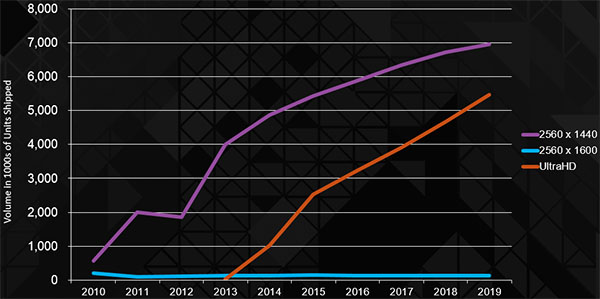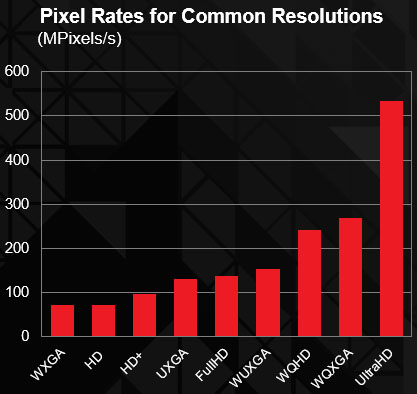AMD Radeon R9 280X, R9 270X, And R7 260X: Old GPUs, New Names
AMD is introducing a handful of new model names today, based on existing GPUs. Do the company's price adjustments make this introduction newsworthy, or will the excitement need to wait for its upcoming Radeon R9 290 and 290X, based on fresh silicon?
Display Technology
Historically, display technology is one of AMD’s strengths. Back in 2009, the company caught its competition flat-footed with Eyefinity, which supported three independent outputs from the Radeon HD 5870 and as many as six from a special Eyefinity 6 Edition of the card. This was a pivotal moment in my career as a writer who loved to play games. Previously, I used a Quadro NVS card in my personal workstation to drive a three-screen array, while a second system handled 3D. The Radeon HD 5870 let me combine those equally important functions in one machine.
More recently, AMD was on the receiving end of an offensive because its drivers do not yield a favorable experience at 3840x2160 (frame pacing isn't supported yet in Eyefinity). But although you probably wouldn’t want to game on one or more of the company’s graphics cards at 4K resolutions, configuring a tiled display was originally easier on AMD’s hardware than Nvidia’s. Of course, Nvidia has since incorporated DisplayID 1.3 support, which automatically creates a Surround array, making the setup process that much smoother. AMD's latest software likewise streamlines usage with existing tiled panels.
The point is that AMD does support 4K TVs (30 and 24 Hz) over HDMI and DisplayPoint, and tiled monitors (60 Hz) using DisplayPort with its existing GPUs. Tiled monitors are not supported through two HDMI ports, which is how we tested Nvidia’s cards in Gaming At 3840x2160: Is Your PC Ready For A 4K Display? Frankly, that’s fine. I'd much rather connect one DisplayPort cable in MST mode anyway. We only benchmarked through the HDMI interface to facilitate video capture for our FCAT analysis tools.
Additionally, the R9 and R7 boards are making it possible to connect matching monitors to any three outputs. Previously, the requirement was that one needed to hook up via DisplayPort. If you can get your hands on a MST hub, you can even enable five- and six-screen configurations using AMD’s reference cards. The issue remains availability; the only solution comes from Club3D, and you can’t buy it anywhere in the U.S.
In the future, we have confirmation that forthcoming AMD cards will definitely support single-stream, non-tiled 4K displays as they become available and get validated. This will likely be early in 2014. It remains to be seen whether the R9- and R7-series cards getting tested today can claim the same thing. The display controller’s frequency, memory arbitration, and latency all play a role in driving that many pixels.
There’s actually quite a bit more to cover on the display technology side. But because AMD hasn’t pulled the veil off of its R9 290 and 290X cards yet, we have to hold off on that discussion. More soon, though.
Get Tom's Hardware's best news and in-depth reviews, straight to your inbox.
Current page: Display Technology
Prev Page TrueAudio: Dedicated Resources For Sound Processing Next Page Test Setup And Software

